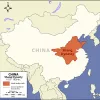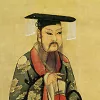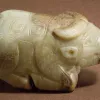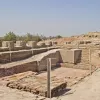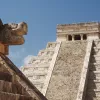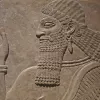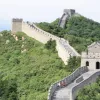Important update from TheSchoolRun
For the past 13 years, TheSchoolRun has been run by a small team of mums working from home, dedicated to providing quality educational resources to primary school parents. Unfortunately, rising supplier costs and falling revenue have made it impossible for us to continue operating, and we’ve had to make the difficult decision to close. The good news: We’ve arranged for another educational provider to take over many of our resources. These will be hosted on a new portal, where the content will be updated and expanded to support your child’s learning.
What this means for subscribers:
- Your subscription is still active, and for now, you can keep using the website as normal — just log in with your usual details to access all our articles and resources*.
- In a few months, all resources will move to the new portal. You’ll continue to have access there until your subscription ends. We’ll send you full details nearer the time.
- As a thank you for your support, we’ll also be sending you 16 primary school eBooks (worth £108.84) to download and keep.
A few changes to be aware of:
- The Learning Journey weekly email has ended, but your child’s plan will still be updated on your dashboard each Monday. Just log in to see the recommended worksheets.
- The 11+ weekly emails have now ended. We sent you all the remaining emails in the series at the end of March — please check your inbox (and spam folder) if you haven’t seen them. You can also follow the full programme here: 11+ Learning Journey.
If you have any questions, please contact us at [email protected]. Thank you for being part of our journey it’s been a privilege to support your family’s learning.
*If you need to reset your password, it will still work as usual. Please check your spam folder if the reset email doesn’t appear in your inbox.
Shang Dynasty
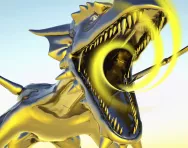
What was the Shang Dynasty?
The Shang Dynasty was the first Chinese dynasty for which we have written and archaeological evidence.
Most historians now date the dynasty from 1600-1046 BC when it was succeeded by the Zhou Dynasty.
The Shang Dynasty was centred around the Yellow River in North East China but moved its capital on a number of occasions. The artistry of its craftsmen has made the dynasty famous for its bronze and jade work.
Top 10 facts
- The first ruler of the Shang was Tang Shang, a military leader. There were thirty Shang Emperors; a dynasty is a succession of rulers from the same family or line.
- The Shang built their houses and public buildings out of wood and mud. They built mud banks to try and hold back flooding. Defensive walls and towers were also built of mud.
- Shang society was divided into different classes. At the top were the ruling class under the royal family, then came priests, an administrative class, warriors, craftsmen, traders, farmers and slaves. Most people were farmers.
- Noble warriors paid tributes to the Emperor who granted them land in return for their loyalty.
- The Shang were specialists in bronze work and many beautiful artefacts have been recovered from their tombs.
- The Shang believed in a supreme God, Shang Di, as well as subsidiary powers or spirits. Ancestor worship and the family were central to their religious practice.They also believed in an afterlife and were buried with the goods, slaves and animals they believed would be useful to them.
- The Shang were the first Chinese to develop writing. They used pictographs, characters which could convey more than one meaning.
- The Shang year of 360 days was comprised of 12 months of 30 days. It was based on the lunar month and the solar year. An additional month was added when necessary.
- In order to predict the future, or ask questions of the gods, people would engrave questions on oracle bones (tortoise shells or cow bones). These would then be burned and the priests would ‘read’ the cracks which then appeared.
- Chinese people used to grind down these ancient animal bones to make traditional medicines. In 1899 some scholars noticed engravings on the bones and discovered they had come from North East China. In 1928 excavations began and evidence of the Shang was discovered.
Timeline
- 1600 BCStart of Shang dynasty
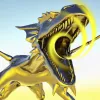
- c1650 BCCity States form
- c1500 BCLarge scale bronze production occurs
- c1400 BCCapital of dynasty is at Yin, near Anyang
- c1200 BCDeath of Lady Fu Hao; spoke-wheeled chariots in use
- 1046 BCEnd of Shang Dynasty


Boost Your Child's Learning Today!
- Start your child on a tailored learning plan
- Complete the activities added each week
- Watch your child's maths & English confidence grow!
Did you know?
- The Shang dynasty was said to have come to power when Tang Shang defeated the evil King Jie of the Xia Dynasty, but historians believe that the Xia dynasty may be legendary rather than real.
- Tai Wu, the ninth Shang Emperor, reportedly ruled for 75 years.
- Lady Fu Hao was a Shang dynasty queen and military leader who died c1200 BC. She led an army of 10,000 men. Her tomb contains the remains of 16 slaves and six dogs who were sacrificed when she died.
- The Shang enjoyed music and played ocarinas, pipes, drums, chimes, cymbals and bells.
- Emperor Zhou, the last Shang Emperor, was said to have been very cruel. He was overthrown by Wu who became founder of the Zhou dynasty.
- A Shang week lasted ten days.
Look through the gallery and see if you can spot the following:
- Map of Shang Dynasty
- The military leader and ruler Tang of Shang
- Drawing of a Shang palace or temple
- A Bronze battle axe (Credit: Editor at Large, Wikipedia)
- Jade carving of a buffalo
Gallery
About
The Shang Dynasty is the first historic dynasty of China. The river valley of the Yellow River provided a fertile area for this civilisation to develop. The area was forested and the Shang used wood to build their homes and public buildings; little has survived of their domestic architecture. Fortunately royal and other tombs have provided many clues as to life under the Shang. Artefacts such as beautifully carved jade and stone, bronze ritual vessels and weapons and domestic items such as the earliest glazed porcelain and woven silk testify to their levels of craftsmanship and artistry.
The Yellow River was unpredictable and prone to flooding. The remains of mud walls tell us about the struggle to keep back the waters of the river during times of flooding. Shang cities were surrounded by defensive walls and gates.
Most of the written evidence we have about the Shang comes from oracle bones, although some bronze and pottery goods also have inscriptions.
The Shang used wheeled carts for transport in times of peace and chariots for hunting and as a means of overseeing warfare. They also used canoes for local trade. Cowrie shells show they traded with coastal dwellers but they did not trade further afield. Roads enabled communication to be maintained between the city states.
The Dynasty lasted for six hundred years and encompassed the reign of thirty emperors.
The Shang are important because they left a legacy of Chinese culture that proved durable and long lasting. The hereditary dynastic succession that they set in place endured for millennia. The role of the family and importance of ancestors remain central to Chinese culture today. Their artistry, with bronze in particular, continues to be admired for its beauty and grace.
Related Videos
Just for fun...
- Visit lots of different workshops in this ancient Chinese street
- Learn to read, write and say some Chinese numbers and words with an Ashmolean Museum worksheet
- Create your own bronze vessel online
- How much do you know about Ancient China? Try a tricky quiz!
- A story about jade
- Take a Shang Dynasty quiz to show off your knowledge
Best children's books about the Shang Dynasty
Find out more
- Look through the brilliant BBC Bitesize Shang Dynasty guides about life in China in 1600-1046BC, the Shang people's jobs and army and what oracle bones were used for
- You'll find lots of images and information in the DKfindout! children's guide to Ancient China
- Information about Chinese tombs and ancestors
- Read a guide to the Battle of Muye, between the Shang and the Zhou people
- Find out about the history of silk production
- Learn about King Di Xin, the final king of the Shang Dynasty, in a short video
- Details of the Chinese writing system of logograms (a symbol represents a word or a meaning)
- Read more about Shang Dynasty history
- Find out about archaeological excavations in Yin Xu (in modern-day China's AnYang city)
- Discover how the Shang were the first Chinese people to invent writing in a video clip
- Look through a guide to Chinese bronzes, with lots of pictures and information
- Find out about a Shang Dynasty bronze vessel used to hold wine for ritual sacrifices to the ancestors
See for yourself
- The British Museum has some Shang Dynasty artefacts
- See a slideshow of Shang Dynasty objects from the Metropolitan Museum of Art in New York
- See artefacts from the archaeological site of Yin Xu, the ancient capital city of the late Shang Dynasty
- At Compton Verney’s Chinese galleries in Warwickshire you can see one of the finest collections of ancient Chinese bronzes outside of China
